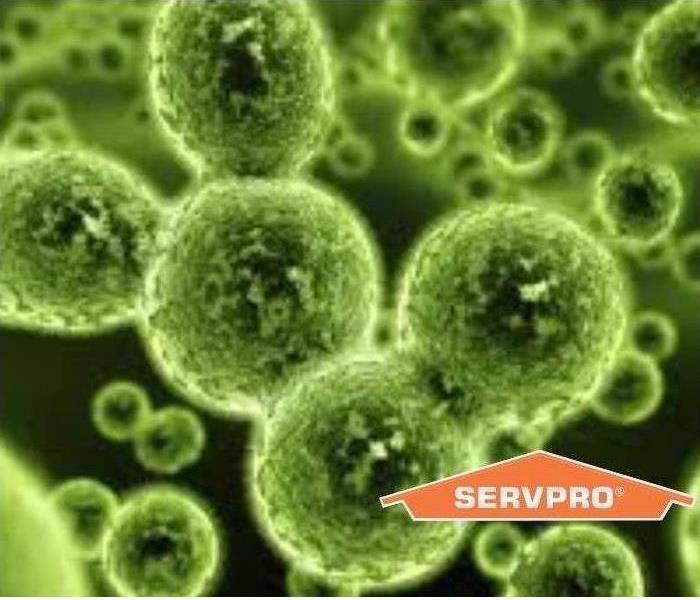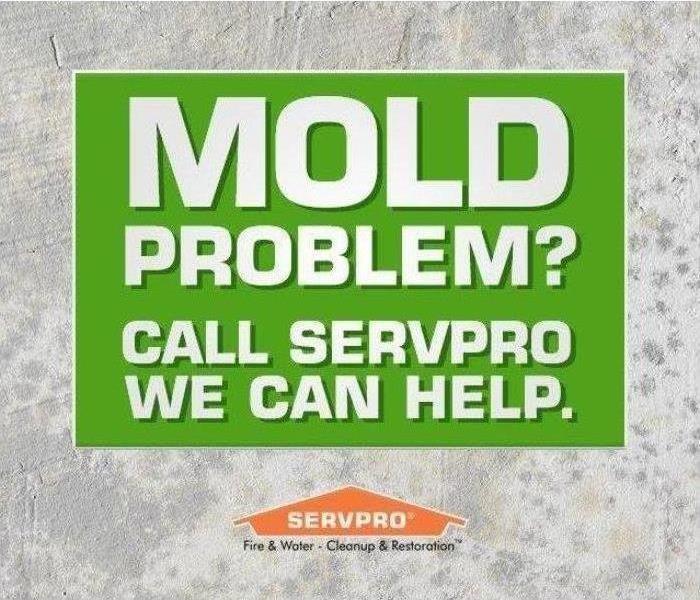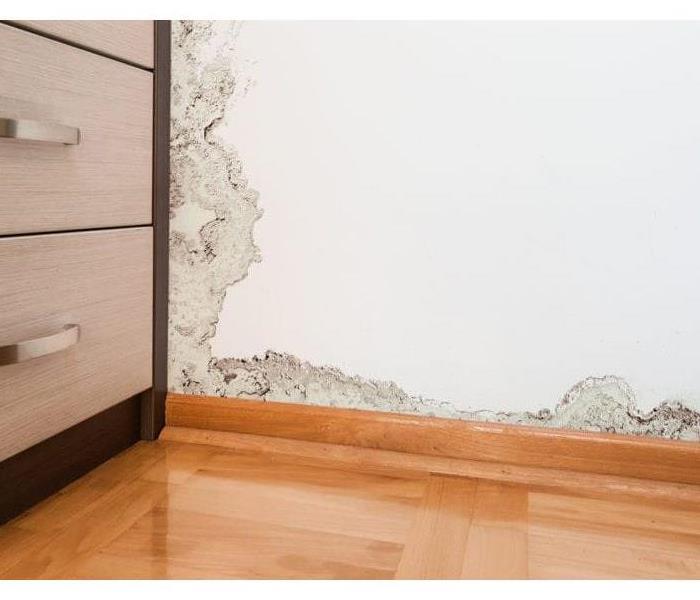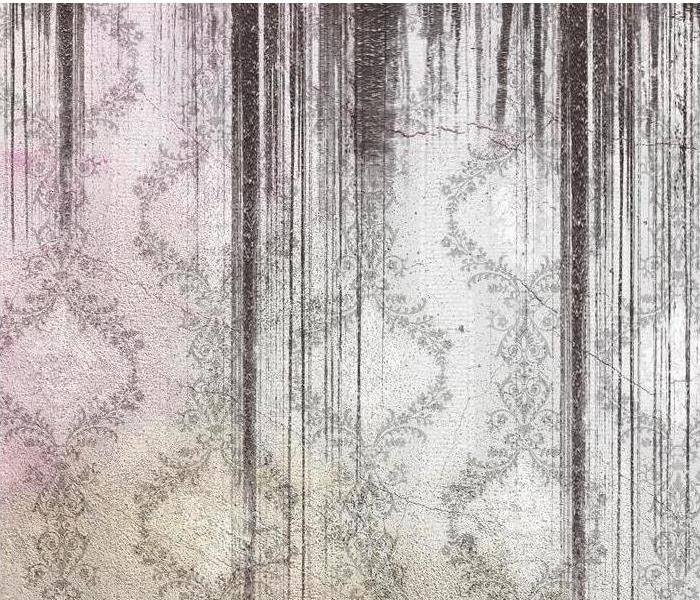Recent Mold Remediation Posts
4 Ways To Prevent Mold in Your Vacant Rental Property
6/21/2019 (Permalink)
During summer months, mold prevention becomes more difficult because hot, humid weather creates the perfect conditions for mold.
In an ideal world, your rental property always has tenants. In the real world, this isn’t always the case. Sometimes a property will remain vacant for weeks or even months, and an empty property is at risk for developing mold growth. In general, this fungus is relatively harmless unless it grows indoors where it creates an unpleasant environment. Follow these mold prevention tips now so that you don’t end up paying more for a mitigation specialist in Piatt/Dewitt Counties to perform a cleanup later.
1. Turn off the water and drain the lines.
If you expect a property to be vacant for any length of time, turn off your water using the main shut-off valve and open all the taps to allow water to drain out of the plumbing lines. Especially in the winter months when pipes can freeze and burst, turning off the water eliminates the possibility of plumbing leaks that can cause water damage. Preventing moisture from collecting anywhere is the number one key to mold prevention.
2. Do repairs first.
Before you close the property, have your contractor check for roof and outer wall leaks, clean the gutters and make sure your sump pump is in good condition. Minor repairs can turn into expensive problems later if rainwater is leaking into your building and creating the moist conditions that mold loves.
3. Leave the heat on low...
You may want to save money by shutting off utilities while the building is vacant. However, the money you may save pales in comparison to the cost of paying a mold mitigation specialist in Piatt/Dewitt Counties, to restore your property. During cool weather, keeping the heat on low keeps the house from becoming too damp and encouraging mold spores to settle and grow.
4. ... or leave the A/C running.
During summer months, mold prevention becomes more difficult because hot, humid weather creates the perfect conditions for mold. However, keeping the air conditioner running pulls moisture from the air, keeping your property’s environment cool and dry. When new tenants arrive, there won’t be any musty odors or mold problems to contend with. For more information, call SERVPRO of Piatt/Dewitt Counties, (217)935-2992. [JB]
4 ways to protect yourself during mold removal
3/7/2019 (Permalink)
 Need help with Mold removal call SERVPRO of Piatt/Dewitt counties at (217) 935-2992.
Need help with Mold removal call SERVPRO of Piatt/Dewitt counties at (217) 935-2992.
How to protect yourself during mold removal
If your company in Piatt/Dewitt counties is suffering from mold growth, you’ll want to take swift action to remedy the problem. In the event that you’ll be present during any or all of the mold remediation process, make sure you take the proper precautions to protect yourself from any side effects of the mold.
1. Use a Face Mask
An air-purifying respirator will protect your lungs from any mold spores in the air. This piece of equipment should be the number on item on your shopping list when dealing with mold growth. Face masks come in both disposable and reusable varieties and are offered with different efficiency levels.
2. Get good eye protection
You’ll want to make sure you have eye protection. Regular glasses won’t cut it; you want wraparound safety googles that fit snugly against your face to prevent any spores getting into your eyes. If you find yourself near moldy drywall, particular moldy drywall that has been cut or torn, dust could fly into your eyes if you are not wearing the proper eye protection. You also want to prevent any chemicals from entering your eyes.
3. Wear Disposable gloves
Gloves should be worn when you are in the vicinity of mold. They can be latex, vinyl, or rubber. Ensure they fit properly, as the wrong size can lead to mold spores sneaking in. Always take off your gloves before leaving the site of the mold remediation and never touch your eyes or nose while wearing them.
4. Cover Everything
Wear a special covering over you clothing, shoes, and hair. Disposable suits are available. You should still change and wash your clothing upon leaving the site. You don’t want to spread mold growth via your clothes or shoes.
By following these four safety measure, you should be able to protect yourself while mold remediation professionals remove mold from your Piatt/Dewitt county business. Hiring experts to handle very step in the removal process is often the economically smart option; they have the advanced equipment needed to get the job done quickly and correctly, and you won’t need to be around the mold at all.
Busting Mold Myths 101
3/5/2019 (Permalink)
Its name evokes images of green rot. Mold is a menacing pollutant existing naturally in the environment. But it's the last thing you want growing in your Piatt/Dewitt Counties home.
Like most people, you probably know that indoor mold ruins homes and threatens health. And you might agree that the first step to eliminating mold is locating its sources.
But do you know where to look for mold? Or even that using a popular disinfectant to clean it can do more harm than good? Chances are, you've been duped by these mold myths that should be laid to rest:
- A Clean Home is Mold-Free.
A dirt-free home is no guarantee against mold infestation. Mold thrives in closets, dark corners, and drywall, a common construction material in homes today. Its microscopic spores sail through the air, so you can't see them or know where they land.
- Your home has no moldy odors.
It's true that gasses produced by mold give off a musty odor. But it's false to assume that having no odor means your home isn't infested. Not all molds produce smells. And if mold is lurking in a basement, its smell doesn't enter the air you normally breathe. It's there, and you never knew it.
- Your home's basement never floods.
Wet basements are a major source of mold. But they're just one of many in your home. Other mainsprings for mold are humidifiers, leaky pipes, dryers that vent indoors, bathrooms and cooking areas that aren't ventilated, even carpets in a basement.
A powerful disinfectant, bleach wipes away mold on glass, metal, or plastic surfaces. But while its chlorine component doesn't penetrate to the sources of mold in drywall and wood, the water contained in bleach does. And--you guessed it--that water lingers beneath the surfaces, providing more than enough food for mold to grow.
Want to know more about mold damage? Call SERVPRO of Piatt/Dewitt Counties today - (217) 935-2992!
What are Safe Moisture Levels?
2/13/2019 (Permalink)
One of the most common questions people have about moisture measurement is “What are safe moisture levels in walls, floors, etc.?’
The answer is: “It depends.”
Types of Wall Materials and Moisture.
What constitutes a “safe” level of moisture in a wall will change depending on what the wall is made of. In most modern construction interior walls tend to use a surface layer of gypsum (a.k.a. drywall) because it’s a relatively inexpensive, lightweight, and long-lasting material that’s easy to work with. However, old buildings may use other interior wall surfaces, such as wooden paneling or plaster.
Generally speaking, for drywall, safe moisture content (%MC) would be less than 1%MC. Anything above 1%MC in drywall would indicate a level of moisture that could compromise the integrity of the gypsum board.
Exterior walls may use a variety of materials, from wooden siding, in vinyl, aluminum, brick, and stone of these exterior wall materials, wood is generally the most susceptible to moisture – which is why wood siding is usually treated to resist rain. However, water repellent finishes can only prevent moisture from getting past the surfaces where the wood has been treated. If water reaches an untreated surface, such as the backside of the wood, then it can still be absorbed and can cause problems.
With wood, it can be harder to generalize what a safe amount of moisture is. This is because the humidity conditions can have an effect on what the ideal moisture content of wood can be – not to mention that “safe” moisture levels can vary from one species of wood to the next.
How humidity impacts “safe” moisture levels
The ambient humidity and temperature conditions where your walls are located can have an effect on what could constitute a “safe” amount of moisture in the wall when dealing with hygroscopic materials like wood. If wood wall materials aren’t in equilibrium with their surrounding environment, then they will absorb or let out moisture until they are – which can cause swelling or shrinkage that impacts the look and integrity of the wood.
So, knowing the relative humidity (RH) conditions is a must when trying to determine what “safe” moisture content for wood wall is. For example, if the temperature in the room is around 80 degrees Fahrenheit, and the RH is 50%, then a “safe” level of moisture in the wall would be about 9.1%MC.
Measure moisture in walls
So, how can you be sure if the walls in a structure have a safe level of moisture? One way to check is to use a moisture meter that is optimized for building inspection world like the BD-2100.
This particular moisture meter is ideal for checking the moisture content of walls because it has reading scales for both drywall and wood that allow for precise quantitative moisture measurements in these materials. A spate reference scale setting can be used for getting qualitative readings of moisture in other wall materials (like plaster).
The BD-2100’s drywall moisture meter readings are accurate in gypsum to moisture content percentages as low as 0.2% and as high as 50%. In the wood scale, the meter can detect moisture accurately over a range of 6%MC to 40%MC. The ability to detect moisture accurately in both wood and drywall makes this device particularly suited for building inspection work.
If you are worried about the moisture levels in your home, call SERVPRO of Piatt/Dewitt Counties anytime at (217) 935-2992. (LB)
How to Remove Mold from Basement Walls
1/14/2019 (Permalink)
When it comes to removing mold from a basement wall, there is no one answer. There are a lot of factors that go into determining if you can remove the mold and how to do it. But before we dive into determining if mold can be removed from a wall, we first must understand what mold is and how it grows.
What is Mold?
Mold is a living organism, or more precisely, it is a fungus. It tends to grow in dark and damp environments and it feeds on cellulose. Cellulose is an organic material that can be found abundantly in drywall, cardboard boxes, carpets, wood, clothes, and curtains. You won’t usually find mold on metals and plastics since they don’t contain cellulose. A quick look around your basement and you can see that there are many places where mold can grow if the conditions are right.
Can Mold Be Removed from Walls?
Now that we know what mold is and how it grows, can it be easily removed from your basement walls? Well, it depends on what your walls are made of and whether they are painted. If the mold is growing on painted drywall or painted concrete, then you may be able to wipe the mold off. You can use a household cleaner that is made to remove mold and spray it down, scrub it off, and wipe it clean.
If the mold is found growing on unfinished drywall, then you might have a problem. Due to the porous nature of the drywall, the mold may be embedded into the drywall and won’t be able to be wiped clean. It is usually best to remove the drywall with the mold and replace it with new drywall.
With unfinished concrete walls, you obviously can’t easily remove and replace the concrete walls like you can with drywall. With concrete walls, you will want to scrub off any mold you can see and then soak the area with a mold cleaner. The cleaner should soak into the concrete and kill off any mold or mold spores that are hiding out underneath the surface.
Household Cleaners May Not Be Good Enough
If you walk down the household cleaners aisle at the grocery store or look up DIY mold cleaning solutions on the web, you’ll notice there are a lot of solutions and recipes to clean/kill/remove mold. While these may seem to do the job at first, most do not re-mediate the mold problem. Weeks later, the mold can return. Even the mold that has been killed can be harmful to one’s health if not removed. A quick search on the Internet shows some recommend a bleach solution while others say that it isn’t effective or healthy. So what is one to do?
Other Problems That You Need to Be Aware before Cleaning Mold
If you do try to clean or remove mold from your walls, be sure to wear ventilation to protect yourself. Inhaling mold can possibly be dangerous to your health especially when you do not know what type of mold you are dealing with.
Another problem with trying to clean mold on your own is that by scrubbing and cleaning and removing it, you may be unknowingly spreading the mold spores elsewhere. If you are scrubbing mold off a wall, the mold spores can quickly and easily become airborne and travel to other parts of your basement and home. Think of mold like a cup of fine flour. If you throw that cup of flour in the air, the tiny bits of flour can travel easily through the air and spread everywhere. Mold spores are even tinier (can’t be seen by the human eye) and can spread even easier and farther.
What’s the Best Way to Remove Mold from Basement Walls?
If you discover mold growing on a wall or walls in your basement, the best thing might be to call a professional mold remediation team like the team at SERVPRO of Piatt/Dewitt counties. The mold remediation team at SERVPRO of Piatt/Dewitt take to contain the mold, remove the mold, clean the contents, and restore your basement. They will also identify the cause of the water or moisture and either stop it or provide a solution to stopping it so that it doesn’t cause mold growth in the future.
One last piece of advice if you discover mold in your basement, is to leave it alone. If you disturb the area, the mold spores can become airborne and spread elsewhere. Give SERVPRO of Piatt/Dewitt a call at (217) 935-2292 anytime if you find mold in your basement.
Mold Spores No More
11/29/2018 (Permalink)
Microscopic mold spores naturally occur almost everywhere, both outdoors and indoors. This makes it impossible to remove all mold from a home or business. Therefore, mold remediation reduces the mold spore count back to its natural or baseline level. Some restoration businesses advertise “mold removal” and even guarantee to remove all mold, which is a fallacy. Consider the following mold facts:
- Mold is present almost everywhere, indoors and outdoors.
- Mold spores are microscopic and float along in the air and may enter your home through windows, doors, or AC/heating systems or even hitch a ride indoors on your clothing or a pet.
- Mold spores thrive on moisture. Mold spores can quickly grow into colonies when exposed to water. These colonies may produce allergens and irritants.
- Before mold remediation can begin, any sources of water or moisture must be addressed. Otherwise, the mold may return.
- Mold often produces a strong, musty odor and can lead you to possible mold problem areas.
- Even higher-than-normal indoor humidity can support mold growth. Keep indoor humidity below 45 percent.
If your home or business has a mold problem, we can inspect and assess your property and use our specialized training, equipment, and expertise to remediate your mold infestation.
If You See Signs of Mold, Call Us Today – 217 935 2992
Do you have mold trouble?
3/26/2018 (Permalink)
Mold is naturally occurring and can be found both indoor and out. This is why mold remediation is so important. Where mold cannot totally be removed, remediation reduces the spores to its natural or baseline count making the area safe to live and work in. Here are some important key points to keep in mind.
*Mold is present everywhere both inside and out.
*Mold spores are microscopic and drift through the air and may enter your house through windows, doors, HVAC systems. They may even gain access on your clothing or pet hair.
*Mold spores thrive in wet damp conditions. These conditions allow mold colonies to grow quickly and spread.
*Mold often produces a heavy musty odor and can produce allergens and irritants. This can be especially dangerous for small children and senior citizens.
If your home or business has a mold problem let us here at SERVPRO help! We can inspect and access your property and use our specialized training, expertise and equipment to re-mediate your mold infestation. Remember the health of the home can translate to the health of those living and working there.
If you see signs of mold please call us today at 1 217 935 2992!




 24/7 Emergency Service
24/7 Emergency Service




